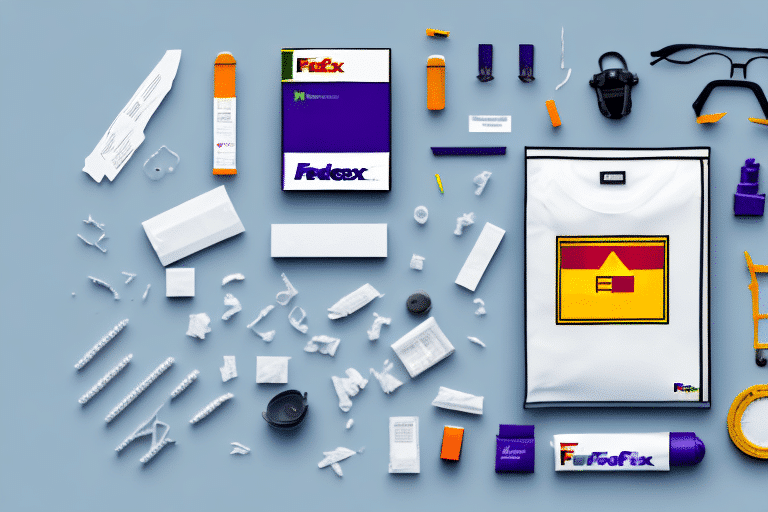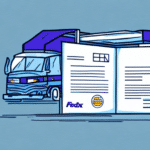Safe and Compliant Shipping of Dangerous Goods with FedEx ETD and Ship Manager Server
Shipping dangerous goods requires meticulous attention to regulations, proper labeling, and secure packaging to ensure safety and compliance. Leveraging FedEx ETD (Electronic Trade Documents) in conjunction with the Dangerous Goods Ship Manager Server can significantly streamline this complex process, enhancing both efficiency and safety.
Understanding FedEx ETD and Dangerous Goods Ship Manager Server
FedEx ETD: Streamlining Documentation
FedEx ETD is an integrated platform designed to simplify the shipping process by enabling electronic submission of customs documentation. This digital approach reduces the risk of lost or misplaced paperwork, ensuring that all necessary documents are readily available and compliant with international shipping standards.
Dangerous Goods Ship Manager Server: Comprehensive Management
The Dangerous Goods Ship Manager Server is specialized software that facilitates the management of hazardous material shipments. It assists in classifying hazardous materials, generating accurate shipping labels, and preparing essential documentation for customs clearance. Additionally, it offers real-time tracking and monitoring to ensure the safe and secure transportation of dangerous goods.
Benefits of Using FedEx ETD for Dangerous Goods Shipping
- Efficiency: Automates the submission of customs documentation, saving time and reducing manual errors.
- Real-Time Tracking: Provides up-to-date information on shipment status, enhancing visibility and control.
- Cost Savings: Minimizes the need for paper-based processes, reducing administrative costs and avoiding fines related to non-compliance.
- Compliance Assurance: Ensures that all documentation meets local and international regulations, mitigating legal risks.
Regulatory Compliance for Shipping Dangerous Goods
U.S. Regulatory Bodies
In the United States, several agencies oversee the regulation of hazardous materials:
- Department of Transportation (DOT): Sets guidelines for the safe transportation of hazardous materials.
- Environmental Protection Agency (EPA): Regulates the environmental impact of hazardous materials.
- Occupational Safety and Health Administration (OSHA): Ensures workplace safety concerning hazardous materials.
International Regulations
Globally, organizations like the International Air Transport Association (IATA) and the International Maritime Organization (IMO) establish standards for the transportation of dangerous goods by air and sea, respectively.
Failure to comply with these regulations can lead to severe consequences, including fines, legal actions, and environmental hazards. Therefore, it's imperative to stay informed about regulatory updates and ensure all shipments adhere to the latest guidelines.
Preparing Dangerous Goods Shipments with FedEx ETD
Documentation and Classification
Begin by utilizing the Dangerous Goods Ship Manager Server to classify your hazardous materials accurately. The system assists in generating a Material Safety Data Sheet (MSDS) and a Dangerous Goods Declaration (DGD), which are essential for customs clearance and safe transportation.
Packaging and Labeling
Proper packaging is crucial to prevent leaks, spills, and accidents during transit. Follow FedEx's packaging guidelines to ensure compliance. Additionally, accurate labeling with the appropriate UN number, shipping name, and hazard class is mandatory for identification and handling.
Eligibility and Restrictions
Not all dangerous goods are eligible for shipment via FedEx ETD. Before preparing your shipment, consult the FedEx Dangerous Goods List to verify eligibility. For goods that are restricted, explore alternative shipping options that comply with regulatory requirements.
Creating Accurate Dangerous Goods Declarations
Ensuring Accuracy and Clarity
Accurate documentation is vital for the safe and compliant shipment of dangerous goods. Carefully review all information to ensure that each hazardous material is correctly listed and classified. Use clear, concise language to describe the materials, avoiding unnecessary jargon or acronyms that may lead to confusion.
Compliance in Packaging and Labeling
Ensure that packaging materials meet the specifications for the type of hazardous material being shipped. Labels should include all required information, such as UN numbers and hazard classifications, and must be prominently displayed on the package. Proper placement and visibility of labels are essential for safety and regulatory compliance.
Overcoming Common Challenges in Dangerous Goods Shipping
Regulatory Changes and Updates
Staying abreast of evolving regulations is a common challenge in shipping dangerous goods. Implementing a robust compliance management system and continuous training for staff can help mitigate the risks associated with regulatory changes.
Supply Chain Disruptions
Unexpected delays due to weather, transportation issues, or regulatory holdups can impact the timely delivery of hazardous materials. Developing contingency plans and maintaining open communication with all stakeholders can help navigate these disruptions effectively.
Documentation Errors
Inaccurate or incomplete documentation can result in shipment delays, fines, or safety hazards. Utilizing specialized software like the Dangerous Goods Ship Manager Server ensures that all necessary information is accurately captured and compliant with regulations.
Best Practices for Safe and Efficient Shipping
- Comprehensive Training: Ensure all personnel involved in the shipping process are adequately trained in handling hazardous materials and familiar with relevant regulations.
- Regular Audits: Conduct periodic reviews of shipping processes and documentation to identify and rectify compliance gaps.
- Utilize Technology: Leverage tools like FedEx ETD and the Dangerous Goods Ship Manager Server to automate and streamline documentation and tracking.
- Clear Communication: Maintain transparent communication with carriers, recipients, and regulatory bodies to ensure all parties are informed and aligned.
Conclusion: Enhancing Safety and Compliance in Dangerous Goods Shipping
Shipping hazardous materials safely and compliantly is a multifaceted challenge that requires diligent adherence to regulations, precise documentation, and robust packaging practices. By integrating FedEx ETD with the Dangerous Goods Ship Manager Server, businesses can streamline their shipping processes, reduce errors, and ensure compliance with both local and international regulations. Embracing best practices and leveraging advanced technology not only enhances operational efficiency but also safeguards individuals and the environment from the inherent risks associated with transporting dangerous goods.






















